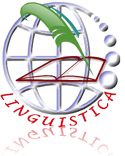The Journal of Rhetorical Pattern in Journalistic Language
DOI:
https://doi.org/10.24114/jalu.v2i4.944Abstract
ABSTRACT This study deals with the analysis of the rhetorical pattern in journalistic language using the style of the inverted-pyramid, they are Who, What, Why, When, Where, and How. The purpose of this study was to find out the dominant rhetorical pattern that was used in a news. The method of this study was descriptive quantitative design. The data for this study were collected from fifteen selected articles about corruption in Indonesia in an English daily newspaper, The Jakarta Post. Fifteen articles were taken from The Jakarta Post in the year 2011, from August until December. This study concludes with findings and implication.Downloads
Issue
Section
Articles
License
Copyright (c) 1970 Riahmawani Purba

This work is licensed under a Creative Commons Attribution-ShareAlike 4.0 International License.
Authors who publish with this journal agree to the following terms:
- Authors retain copyright and grant the journal the right of first publication with the work simultaneously licensed under a Creative Commons Attribution License that allows others to share the work with an acknowledgment of the work's authorship and initial publication in this journal.
- Authors are able to enter into separate, additional contractual arrangements for the non-exclusive distribution of the journal's published version of the work (e.g., post it to an institutional repository or publish it in a book), with an acknowledgment of its initial publication in this journal.
- Authors are permitted and encouraged to post their work online (e.g., in institutional repositories or on their website) prior to and during the submission process, as it can lead to productive exchanges, as well as earlier and greater citation of published work (See The Effect of Open Access).
- This work is licensed under a Creative Commons Attribution-ShareAlike 4.0 International License.

